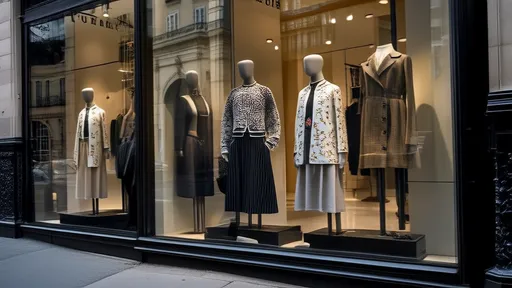The European fashion industry is bracing for a seismic shift as the so-called "Fashion Quota Law" comes into effect this month. This controversial legislation mandates that all clothing brands operating in EU markets must ensure at least 30% of their product lines are designed within European borders. The law represents both a protectionist move and an ambitious cultural policy, sparking heated debates across the global fashion ecosystem.
Behind the polished storefronts of Paris, Milan, and Berlin, design teams are scrambling to reorganize their creative processes. Luxury conglomerates that previously outsourced most of their design work to studios in Asia are now establishing new ateliers in Portugal, Romania, and other EU countries with lower labor costs. "We're seeing an unprecedented relocation of creative talent," observes Claudia Montaigne, a Brussels-based fashion policy analyst. "Designers who haven't set foot in Europe for years are suddenly being offered lucrative contracts to work in Valencia or Vilnius."
The law's proponents argue it will revitalize Europe's fashion heritage while creating skilled jobs. French Minister of Culture Aurélie Filippetti recently declared the quota "a necessary corrective to decades of creative outsourcing that diluted European design identity." Indeed, preliminary data suggests the policy is already having an effect - textile arts programs at European universities report surging enrollment, and vacant industrial spaces in former manufacturing hubs are being converted into design incubators.
However, fast fashion retailers face particularly steep challenges. A spokesperson for a major Swedish chain revealed they're racing to develop new European-designed basic items like t-shirts and jeans - categories traditionally handled by overseas teams. "The irony is palpable," notes industry journalist Marco Bianchi. "We're likely to see Portuguese-designed knockoffs of Chinese-designed copies of originally Italian designs. The cultural feedback loops will become surreal."
Legal experts highlight enforcement complexities. The legislation defines "design" broadly to include everything from initial sketches to technical specifications, but leaves room for interpretation. Some brands are exploring loopholes, such as having European teams "approve" designs created elsewhere. The European Fashion Regulatory Authority (EFRA) has promised strict audits, with penalties including substantial fines and even temporary sales bans for repeat offenders.
Consumer reactions remain mixed. While some shoppers welcome the return of "Made in Europe" design ethos, others worry about rising prices. A Berlin boutique owner told me: "My customers want sustainability and local production until they see the 290 euro price tag on a quota-compliant sweater." Market researchers predict the law will accelerate the bifurcation of fashion retail into premium European-designed lines and increasingly marginalized import collections.
The long-term cultural implications may prove most significant. By mandating local design, the EU is essentially legislating aesthetic preferences. Italian design schools report new government grants for programs emphasizing "European sensibility," while trend forecasters are scrambling to decode what exactly constitutes compliant design. Is a Japanese minimalist aesthetic adapted by a Danish designer sufficiently European? The law doesn't say.
As the first season under the new regime unfolds, all eyes are on how creatively - or cynically - the industry adapts. From Milanese couture houses to Barcelona-based footwear startups, Europe's fashion landscape is undergoing a forced renaissance. Whether this experiment preserves creative diversity or breeds a new parochialism remains fashion's most pressing question.

By /Jul 24, 2025

By /Jul 24, 2025

By /Jul 24, 2025

By /Jul 24, 2025

By /Jul 24, 2025

By /Jul 24, 2025

By /Jul 24, 2025

By /Jul 24, 2025

By /Jul 24, 2025

By /Jul 24, 2025

By /Jul 24, 2025

By /Jul 24, 2025

By /Jul 24, 2025

By /Jul 24, 2025

By /Jul 24, 2025

By /Jul 24, 2025

By /Jul 24, 2025

By /Jul 24, 2025